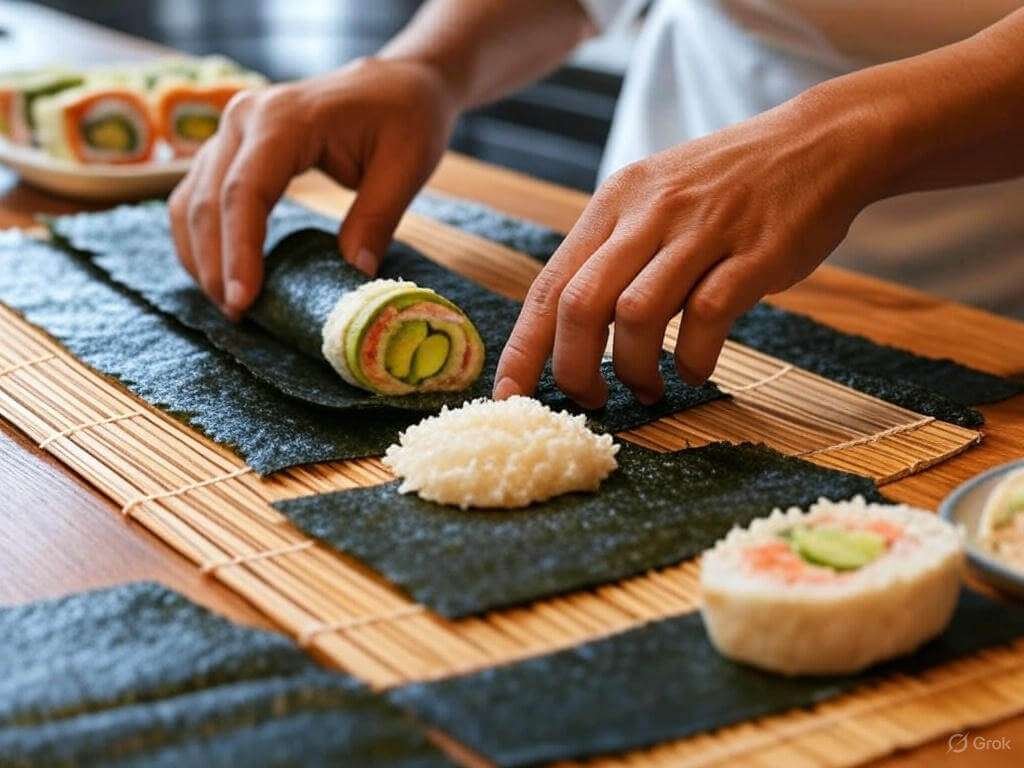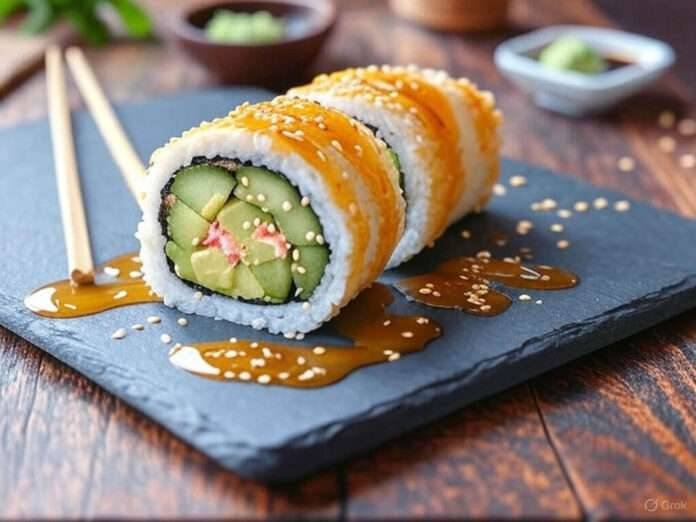History
The California roll emerged as a game-changer in the sushi world, credited to chefs like Ichiro Mashita in Los Angeles or Hidekazu Tojo in Vancouver. In the 1960s, sushi was still an unfamiliar concept in the West, with raw fish being a hard sell. To make sushi more approachable, chefs swapped out raw fish for cooked imitation crab and added creamy avocado—a nod to California’s abundant produce. This fusion dish became a hit, paving the way for sushi’s global popularity.
For a deeper dive into sushi’s evolution, check out this article on sushi history.
What’s Inside a California Roll?
- Imitation Crab (Surimi): A budget-friendly, cooked alternative to real crab, offering a mild, sweet flavor.
- Avocado: Adds creaminess and a buttery texture that pairs perfectly with rice.
- Cucumber: Brings a refreshing crunch to balance the richness.
- Sushi Rice: Sticky, seasoned rice forms the base, often rolled on the outside.
- Nori (Seaweed): A thin sheet of seaweed holds everything together.
- Optional Extras: Sesame seeds or tobiko (fish roe) for garnish, and soy sauce, wasabi, and pickled ginger for serving.
These ingredients make the California roll a crowd-pleaser, especially for those hesitant about raw fish. Curious about sushi-grade ingredients? The FDA’s guidelines on safe seafood are a great resource.
Step-by-Step Recipe
Prepare Your Ingredients
- Rinse 1 cup of sushi rice until the water runs clear, then cook it with 1.25 cups of water.
- Once cooked, season the rice with 2 tablespoons of rice vinegar, 1 tablespoon of sugar, and 1 teaspoon of salt. Let it cool.
- Slice 1 avocado, 1 cucumber, and 4-5 imitation crab sticks into thin strips.
Assemble

- Place a bamboo sushi mat on a flat surface and cover it with plastic wrap.
- Lay a sheet of nori, shiny side down, on the mat.
- Spread a thin layer of sushi rice over the nori, leaving a 1-inch border at the top.
- Sprinkle sesame seeds over the rice (optional).
- Flip the nori so the rice faces down on the mat.
- Along the bottom edge of the nori, place a row of crab, avocado, and cucumber strips.
Roll and Slice
- Use the mat to tightly roll the nori over the filling, applying gentle pressure to shape it.
- Wet the top border of the nori with water to seal the roll.
- Using a sharp knife, slice the roll into 6-8 pieces, wiping the knife with a damp cloth between cuts for clean slices.
Serve with soy sauce, wasabi, and pickled ginger. For more sushi-making tips, explore this How to Make Homemade Sushi.
Why the California Roll Remains a Sushi Staple
The California roll isn’t just a beginner’s sushi—it’s a symbol of culinary innovation. Its accessibility introduced millions to sushi, and its versatility keeps it on menus worldwide. Today, you’ll find variations with spicy mayo, tempura flakes, or even mango for a tropical twist. According to a 2023 survey by the Sushi Association, the California roll remains the most ordered sushi roll in the U.S., making up 30% of all sushi orders.
Tips for the Perfect Roll Experience
- Use Fresh Ingredients: Quality avocado and cucumber make a big difference in flavor.
- Don’t Overfill: Too much filling makes rolling tricky—stick to a thin layer.
- Pair with Sides: Serve with miso soup or edamame for a complete meal.
- Experiment: Add a drizzle of soy sauce or sriracha inside the roll for extra flavor.
The California roll is your gateway to sushi mastery. So, grab your bamboo mat and start rolling!




















